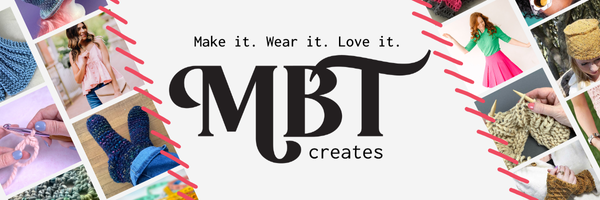I love this three-color crochet edging – I think some people refer to it as the Rope Stitch Edging but as you know if you crochet, there aren’t many standards for naming things these days 🙂
This is a dense, reversible edging, and once you get the hang of it in this tutorial, you can make all sorts of adjustments to colors and color placements to get the look you want. Perfect for edging blankets!

There may be affiliate links in this post. If you make a purchase using one of these links I make be compensated at no additional cost to you.
This edging can be worked straight or in the round, but I wanted to do a piece in the round to address working around corners, so I grabbed a granny square I had made earlier.
You can also use more than three colors if you like, or make it single color by using three or more balls of yarn, but I am going to focus on the three color variation shown in my photos.
This post is part of the Crochet Borders and Edges Blog Hop – click on the image below to get more information!

Getting Started
First thing is your base row or round. I used single crochet but any height stitch will do depending on your project! You want your base row or round to have a multiple of the amount of colors you are using. I am using three colors, so I made sure my base round total stitch count was a multiple of three.
To begin, I need to attach all three colors of yarn I wish to use. It doesn’t really matter where you start, but along a straight side (not the corner) is easiest.

Join the first yarn with a slip stitch in any empty base stitch. There is a lot of chaining going on in this edging – along the straight edges you want your chain count to be the number of colors you are using plus one. So in my case, I am using three colors so I joined my first yarn then chained four. Now extend your working loop and remove the hook.
Join your second color and chain four in the base stitch next to the one you placed your first color into, extend your working loop and remove the hook, and your third color in the next stitch in the same manner.
In each case, I extended the working loop just a little bit so it did not come unraveled. You can put locking stitch markers in each loop if you wish and are worried, but I found it slowed down my stitching too much to keep fussing with stitch markers. Because I was working in wool for the sample and wool is “sticky” I didn’t extend my loop much because I was not worried it would pull out easily. If you are working with a slicker yarn you may need to extend the loop more.
Now to get started, insert your hook back in your first color and tighten up the loop, slip stitch in the next open base stitch, chain four, extend your working loop and remove your hook.
That is the whole process! Grab the next color in your rotation, put the hook back in and tighten the loop, slip stitch in the next open base stitch, chain four, extend your working loop and remove your hook.
The only trick/tip to remember is to make sure as you move along that you are bringing both your chain and its working yarn IN FRONT of the other stitches. Don’t let that working loop get caught in the back! See the video below if you need clarification.

Working Around Corners:
On a lot of different edgings and borders, you have to add stitches at the corner to make sure the work lays flat because the edging has to travel a little farther. But I did not want to add stitches and interrupt the smooth flow of the colors, so at each corner, in each color, I chained five instead of four to give myself a little more real estate! Go back to chain fours as soon as the corner is turned.

Finishing:
If you are working in a straight row, when you run out of base stitches you have come to the end of your edging, which is simple enough! End each color with a slip stitch in the base stitch.
In the round however, you will want to keep going a little bit even after your base stitches are all full! For each color, when you have slip stitched in the last available base stitch and chained four, bring your work to the front as if you were going to keep going, slip stitch in the same base stitch where you first joined your yarn of the same color, and end off. This will leave you with an unbroken line of color and no one will be able to see the beginning or end.

That’s all there is to it! You can experiment with different amounts of colors, and color placement, for endless variations on this interesting border!
Or if you prefer the very short version!

